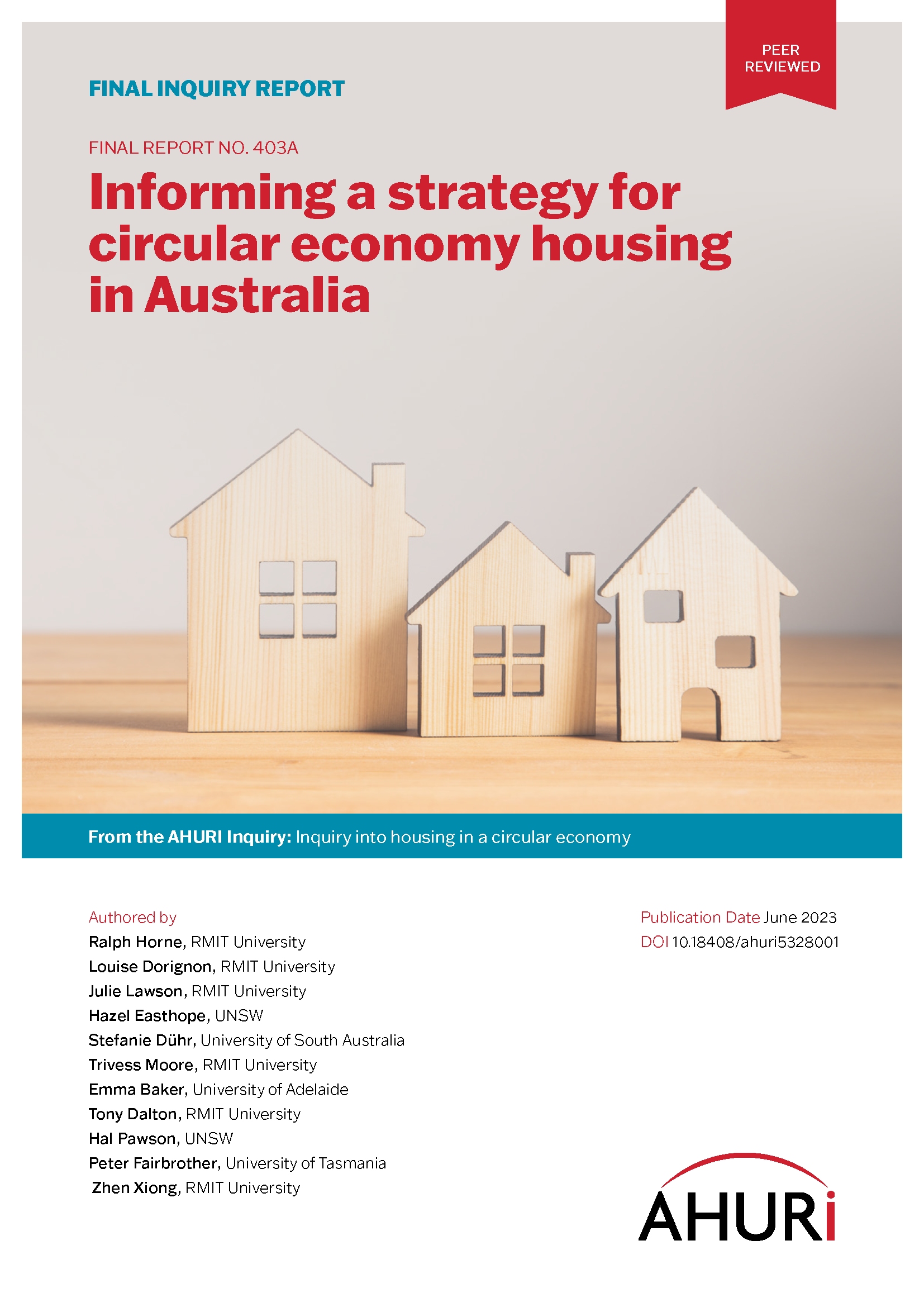
Circular Economy thinking in Australia’s housing industry could cut greenhouse gas emissions
29 Jun 2023
As the construction sector produces about 18 per cent of Australia’s greenhouse gas emissions, coming up with an overarching strategy that will reduce this impact is vital. A new AHURI Inquiry final report, Informing a strategy for circular economy housing in Australia, brings together a wealth of information needed to build an effective and efficient circular economy (CE) for the Australian housing industry: from construction, through operation to demolition and recycling of used building materials.
The CE concept calls for a ‘closed-loop’ of building design and materials for sustainable housing that involves low-emission, re-used or recyclable and durable building materials while also meeting the sustainable development objectives of social and intergenerational equity, local economic opportunities and resource efficiencies.
‘Sustainable housing has a reduced environmental footprint and should also be affordable and available to as many Australians as possible, particularly those on lower incomes,’ says Professor Ralph Horne of RMIT University, lead author of the research. ‘It’s also housing that is comfortable for residents as well as resilient and future-proofed against flooding, bushfire and other increasing climate change hazards.’
This Inquiry draws on four coordinated AHURI research projects: from investigating sustainable housing at a neighbourhood level to the supply of sustainable apartments, and how to retrofit social housing using CE approaches to examining how the use and reuse of building materials can work in a circular economy.
‘An effective CE requires actively shifting practices and perceptions of value to those that favour CE housing outcomes,’ says Professor Horne. ‘Housing industry organisations can’t meet this challenge without purposeful public intervention and cooperation from all stakeholders. To reinforce CE approaches we also need clear targets and performance standards, as well as accountable reporting systems that sustain improvements.’
The research proposes five high-level policy development options that can inform a CE housing strategy:
Policy option 1: Comprehensive intervention—establish what needs to change across industry, government and community.
Policy option 2: Engage stakeholders. Set up a Commonwealth Task Force to attract buy-in from diverse stakeholders across industry, government and community.
Policy option 3: Establish roles and goals for organisations and corporate entities involved in implementing CE.
Policy option 4: Provide tools and frameworks that can guide different housing subsectors.
Policy option 5: Support with robust action plans to inform and guide conversations about the transition to CE housing in Australia.
Regulation is essential, but more is required
‘The scale of change required is significant,’ says Professor Horne. ‘The key next phase of the CE transition will be to translate the findings from this research Inquiry into a national strategy. This will involve wide consultation and coordination, and will require new partnerships between governments, private developers and local communities.’
The report will be launched at the ENHR Conference (European Network for Housing Research), whose overarching theme this year is ‘Urban regeneration: shines and shadows’, in Lodz (Poland) on the 30th of June 2023.

